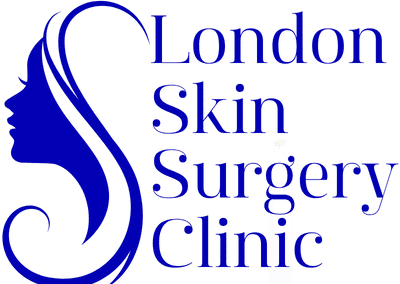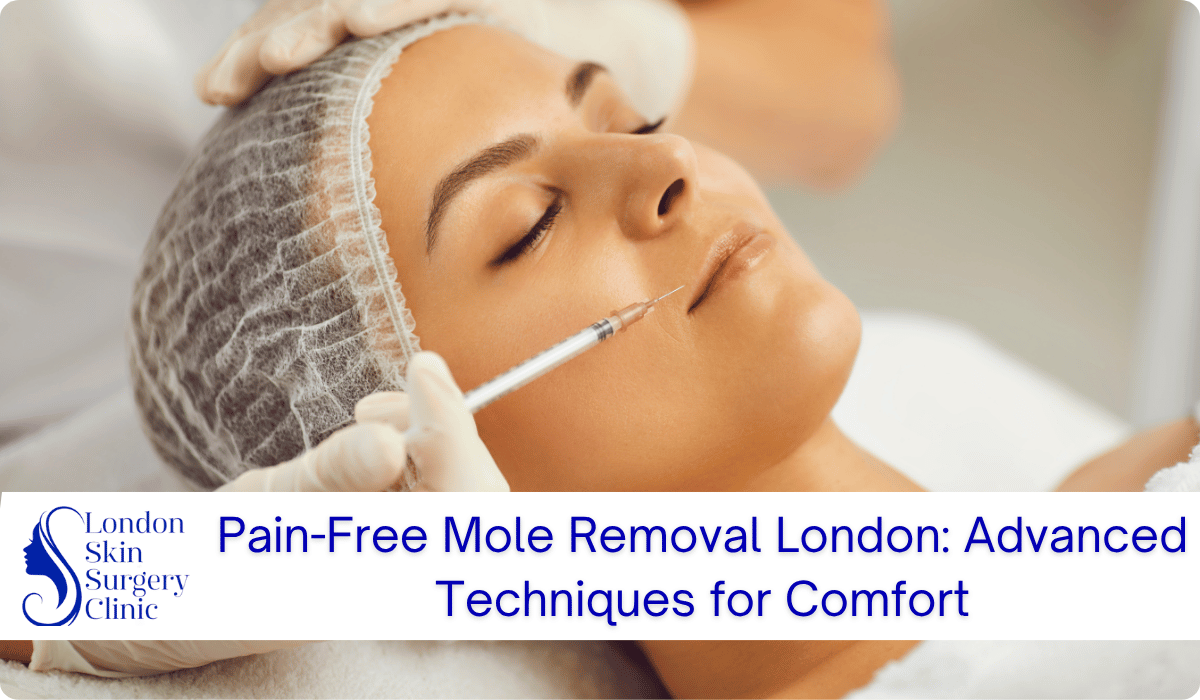Mole Removal Essentials: What You Need to Know
When considering mole removal in London, it’s essential to choose an experienced, qualified dermatologist or plastic surgeon who uses the latest techniques to minimise discomfort and scarring. Most mole removal procedures can be performed safely under local anaesthetic, with minimal pain and a relatively short recovery time of a few days to a few weeks. Proper aftercare, including keeping the wound clean and covered, is crucial for optimal healing and cosmetic results. While no mole removal is completely scarless, there are steps you can take to minimise scars, such as choosing a skilled surgeon, keeping the wound moist during healing, and protecting the area from sun exposure. If you have any concerns about a mole, don’t hesitate to seek professional advice and treatment.
Here is the blog post content with the requested sections and HTML formatting:
Table of Contents
- What is Mole Removal and When is it Necessary?
- Choosing a Mole Removal Clinic in London: What to Look For
- Advanced Techniques for Pain-Free Mole Removal
- Local Anaesthetic Options for Comfortable Mole Surgery
- Is Mole Removal Painful? Managing Discomfort During Treatment
- Aftercare Essentials: Ensuring Optimal Healing After Mole Removal
- How Long Does it Take to Recover from Mole Removal?
- Minimising Scars: Expert Tips for the Best Cosmetic Results
What is Mole Removal and When is it Necessary?
Mole removal is a minor surgical procedure to excise or shave off moles from the skin. Moles are growths on the skin that are usually benign. However, some moles may be removed for cosmetic reasons if they are large, raised or unsightly. In other cases, suspicious moles that have changed in size, shape or colour may need to be removed and tested to rule out skin cancer. Mole removal in London is performed by dermatologists or plastic surgeons using specialised techniques to minimise scarring. If you are considering mole removal, it’s important to choose an experienced clinic and understand the mole removal process and recovery time.
Choosing a Mole Removal Clinic in London: What to Look For
When searching for a mole removal clinic in London, look for experienced skin specialists who use the latest techniques. Check that the clinic is registered with the Care Quality Commission and the doctors have accredited training in dermatology or plastic surgery. Read patient reviews and before & after photos to assess their results. Other factors to consider include the location and accessibility of the clinic, waiting times for appointments, and transparent mole removal pricing. The London Mole Removal Clinic on Harley Street is a leading provider of safe, comfortable mole surgery in a CQC-regulated facility.
Advanced Techniques for Pain-Free Mole Removal
Modern mole removal techniques focus on minimising discomfort and scarring for the patient. Depending on the location and type of mole, your dermatologist may use excision (cutting), shave removal, laser therapy or electrosurgery. Many London mole removal clinics now offer pain-free methods like Mohs surgery under local anaesthetic. This advanced technique removes the mole layer by layer, testing each one to ensure all abnormal cells are gone while preserving healthy skin. Other gentle mole removal options include radiofrequency and CO2 laser treatment. Talk to your mole specialist about the best method for your skin type and desired cosmetic outcome.
Local Anaesthetic Options for Comfortable Mole Surgery
Most mole removal procedures can be comfortably performed under local anaesthetic, without the need for sedation or general anaesthetic. The area is thoroughly numbed before treatment begins. You may feel some pressure but should not experience any sharp pain. Common local anaesthetic options include lidocaine injections or cream to numb the skin surface. Let your surgeon know if you have any allergies. Some topical anaesthetics can be applied an hour before the procedure so they have time to take effect. With proper anaesthetic, mole removal will be a pain-free experience and you can return to normal activities the same day.
Is Mole Removal Painful? Managing Discomfort During Treatment
A common concern is whether mole removal surgery will be painful. Thanks to local anaesthetic, most patients report minimal to no pain during the procedure. You may feel a brief sting from the injection, then the area will go numb within minutes. Some pressure sensations are normal as the doctor works, but tell them if you feel any sharp pain. Afterwards, the treatment site may feel tender, sore or itchy as it heals over the next 1-2 weeks. Your doctor will recommend over-the-counter pain relief or prescribe something stronger if needed. Applying an ice pack and keeping the wound clean and covered will also help manage discomfort as you recover.
Aftercare Essentials: Ensuring Optimal Healing After Mole Removal
Proper aftercare is essential for a smooth recovery and good cosmetic results after mole removal. Your doctor will provide specific wound care instructions, which may include:
- Keeping the area covered with a sterile dressing
- Gently cleaning the wound and applying antibiotic ointment
- Avoiding strenuous activity or exercise for a few days
- Not smoking, as this can delay healing
- Protecting the scar from sun exposure
It’s normal to experience some redness, swelling, tenderness or oozing as the skin heals. Contact your clinic if you have any signs of infection like increasing pain, discharge or fever. Attend any scheduled follow-up appointments so your doctor can monitor your healing.
How Long Does it Take to Recover from Mole Removal?
Recovery time after mole removal depends on the size and location of the mole, as well as the technique used. Healing may take anywhere from a few days to a few weeks. Smaller shave-excised moles typically heal within 1 week, while larger excisions requiring stitches can take 2-3 weeks. Expect some redness, tenderness and scabbing in the first few days. Most patients return to work and normal activities within 1-2 days. However, avoid swimming, saunas and vigorous exercise until the wound has healed. Complete healing of the scar can take several months. Follow your doctor’s advice on when to resume specific activities.
Minimising Scars: Expert Tips for the Best Cosmetic Results
While no mole removal procedure is completely scarless, there are ways to minimise scars for the best cosmetic outcome. Choose an experienced surgeon who uses meticulous techniques to reduce tension on the skin and hide scars in the natural creases. Mole removal on the face requires extra precision. Smaller moles may be good candidates for laser treatment, which is less likely to leave a scar than excision. During recovery, keep the wound moist with ointment to prevent scabbing and promote healing. Once the skin has healed, scar lightening creams and silicone gel sheets can help flatten and fade scars. Avoid sun exposure and always use high-SPF sunscreen on the area to prevent hyperpigmentation.
Frequently Asked Questions
How do I know if a mole needs to be removed?
Moles that are asymmetrical, have irregular borders, change in color, are larger than 6mm in diameter, or evolve in size or shape over time should be evaluated by a dermatologist. These signs may indicate skin cancer. Additionally, moles that are frequently irritated by clothing or during grooming may be candidates for removal.
What is the best method for removing a mole?
The best mole removal method depends on the size, location, and type of mole. Common techniques include surgical excision, shave excision, and laser therapy. Your dermatologist will recommend the most appropriate method based on your individual needs and desired cosmetic outcome. Advanced techniques like Mohs surgery offer precise removal while minimizing scarring.
Is mole removal covered by the NHS?
The NHS typically covers mole removal when it is medically necessary, such as when a mole is suspected to be cancerous or is causing significant discomfort. However, cosmetic mole removal is not usually covered by the NHS. In these cases, patients can seek treatment at private clinics in London.
Can I remove a mole at home?
It is not recommended to attempt mole removal at home. Over-the-counter mole removal creams and other home remedies can cause scarring, infection, and may not effectively remove the entire mole. It is always best to have moles evaluated and removed by a qualified dermatologist or plastic surgeon.
How much does mole removal cost in London?
The cost of mole removal in London varies depending on the clinic, the size and number of moles being treated, and the removal technique used. On average, prices range from £200 to £500 per mole. Some clinics may offer package deals for multiple mole removals. It is best to contact individual clinics for specific pricing information.
Will I have a scar after mole removal?
While no mole removal technique is completely scarless, skilled surgeons use advanced methods to minimize scarring. Smaller moles removed with shave excision or laser therapy may result in minimal scarring that fades over time. Larger moles requiring surgical excision will likely leave a more noticeable scar. However, proper aftercare and scar management techniques can help achieve the best cosmetic result.
How long does it take for a mole removal scar to heal?
The healing time for a mole removal scar varies depending on the size and depth of the excision, as well as individual factors such as age and skin type. Most wounds heal within 1-2 weeks, although complete scar maturation can take several months. Proper wound care, sun protection, and following your doctor’s aftercare instructions can help promote optimal healing.

